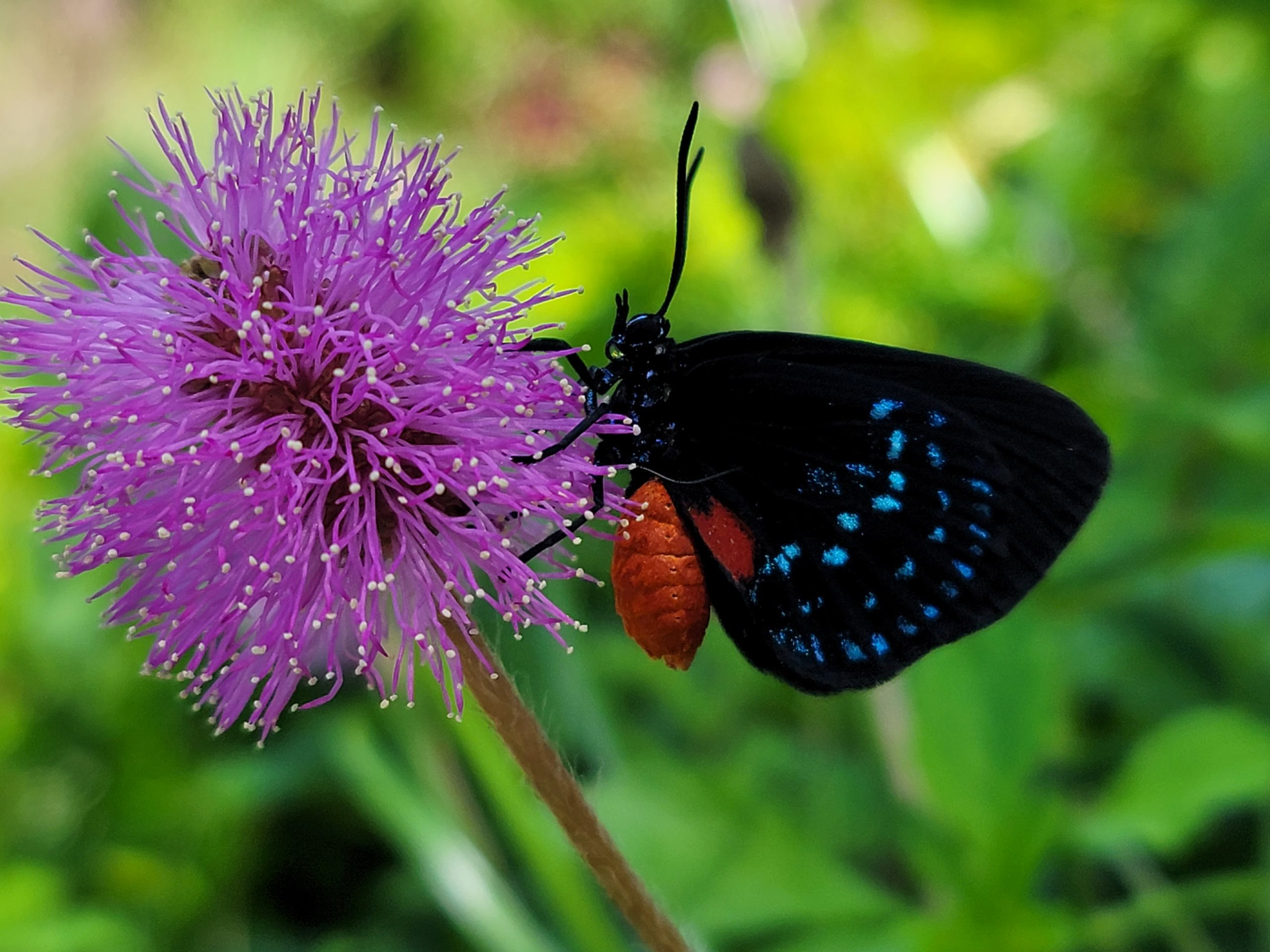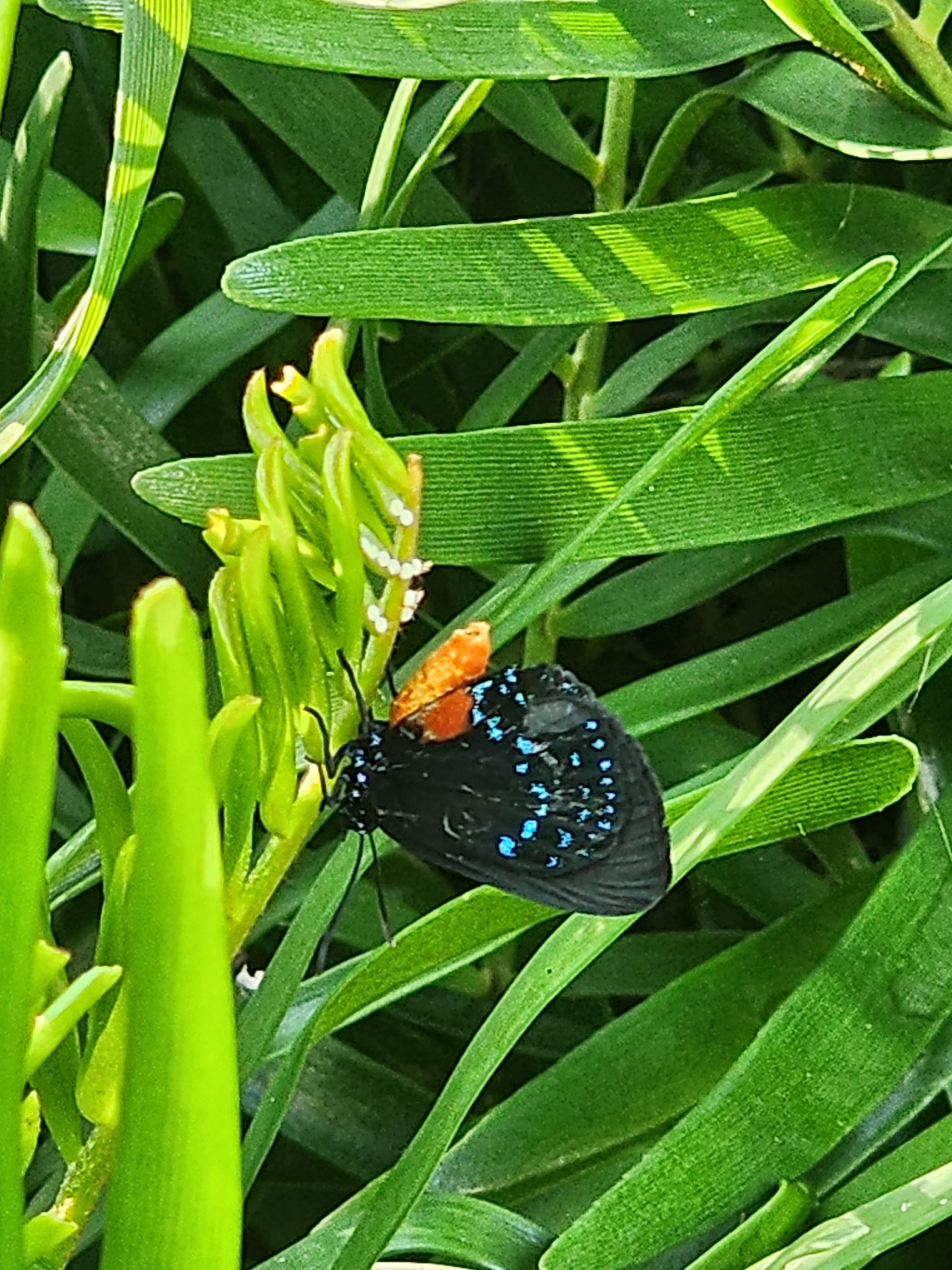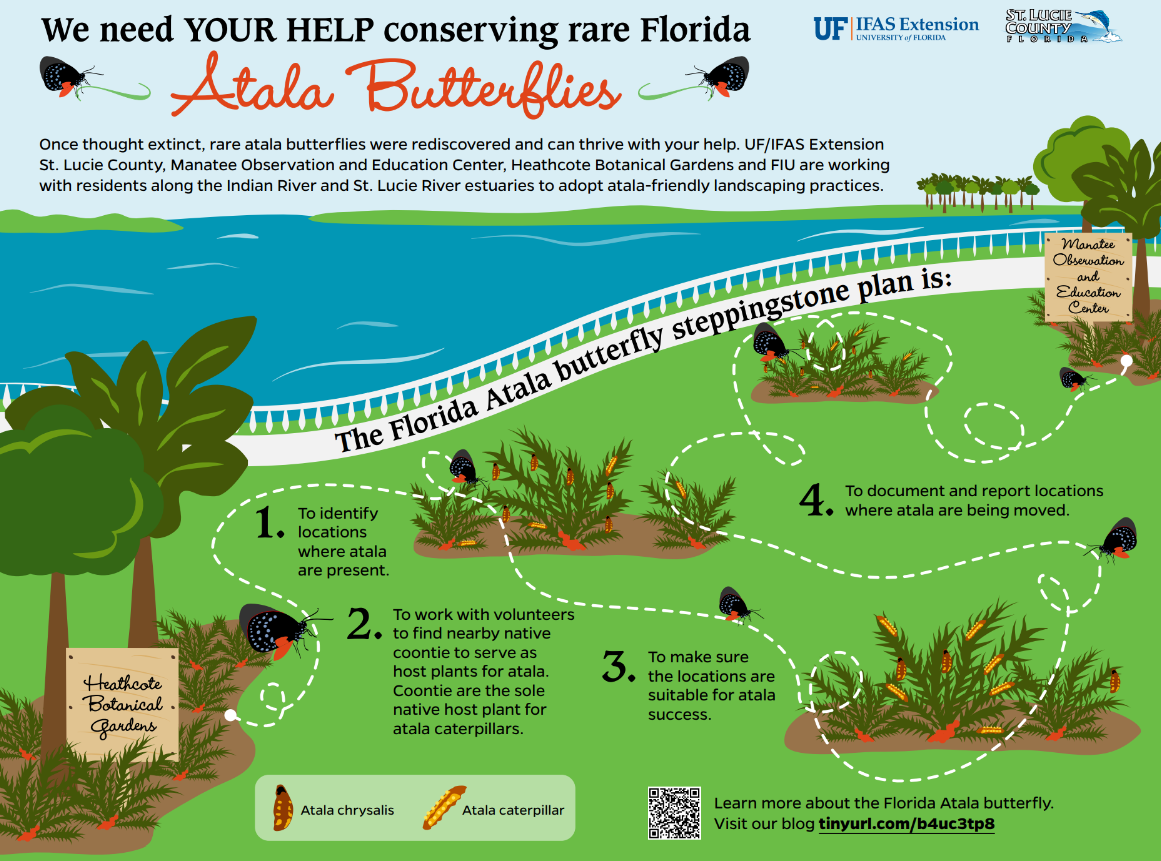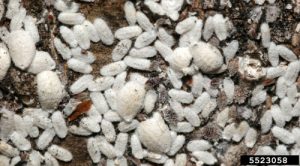Countless species of flora and fauna have been lost in what is now being labeled as the Anthropocene extinction event. Fortunately, two local species have not only escaped from the brink of extinction but have rebounded as humans have improved our behavior. This success story holds valuable lessons in how we can save other imperiled species through our cultural practices. This blog is about the atala butterfly, which in 1888 was referred to as “the most conspicuous insect in semitropical Florida” for its striking characteristics and abundance. But, within 50 years of this quote, the atal was considered extinct! This shocking decline, and now spectacular recovery that is in progress, is intrinsically tied to the decisions we made and continue to make as Floridians.
The story of the coontie plant (Zamia integrifolia) and atala butterfly (Eumaeus atala) is one that I hope inspires you to implement Florida-Friendly Landscaping™ practices. Together, we can transform our home landscapes from being part of the larger biological desert and instead make biodiverse oases for our native flora and fauna.

Historical Range
The atala butterfly is native to South Florida and the Caribbean, specifically the Bahamas, Cuba, and the southern half of Florida. It belongs to a family of butterflies (Eumaeus) that all feed on different Zamia species in the Americas.
Near Extinction
In the 19th and 20th Centuries, the atala butterfly faced a severe threat to its existence. The butterfly’s host plant, the coontie cycad, faced widespread decimation, covered in Part I of this blog series. Rapid urbanization in South Florida further led to the loss of its favored ecosystem, the pine rockland habitat, which is now considered one of the rarest and most critically imperiled habitats in the world. As a consequence, the atala butterfly population all but disappeared as the early 20th Century gave way to the late 20th Century, with the butterfly being considered extinct in Florida after decades without verified sightings.

Conservation Efforts
Fortunately, dedicated conservationists and nature lovers recognized the urgency of saving the atala butterfly from disappearing forever. Their tireless efforts, coupled with the establishment of protected areas, contributed to the species’ remarkable recovery. Major moments include the establishment of Everglades National Park in 1947, the establishment of Key Biscayne National Park in 1968, and the discovery of small pocket populations on Virginia Key and Key Biscayne. One of Florida’s foremost naturalists, Roger Hammer, helped collect and move a few of these survivors to Fairchild Tropical Botanic Garden in late 1979. From there, the atala really started to take off again, with several newspaper advertisements published to ask people to come and pick them up from the botanical gardens, where they had become a pest amongst their rare cycad collection, to take them to natural areas where coontie persisted.
Cultural Change
Florida naturalists and concerned citizens really made the difference. Once educated about this butterfly and its plight, they started to plant the coontie cycad extensively, passing along caterpillars to whoever created a new ideal habitat for the atala. At the same time, concern over landscaping practices became an issue. People started to push for their local municipalities to utilize less water, fertilizers, and pesticides. This helped kick off the Florida Yards & Neighborhoods Program in 1993, now called the Florida-Friendly Landscaping™ program. These citizens and the programs they helped spawn changed the landscapes of cities from non-native plants chosen for their lack of wildlife value to Florida-Friendly and native plants that thrived in our local conditions, creating living landscapes. This is why coontie are now an extremely common landscaping plant across Florida.
Atala Steppingstone Project

Resurgence and Ecotourism
Thanks to these relentless conservation efforts, the atala butterfly population has rebounded significantly. Today, it can be observed fluttering through restored habitats in South Florida, including places where it wasn’t historically recorded as having existed, such as the UF/IFAS Extension Sarasota County grounds at Twin Lakes Park. While it might not have been able to survive in these spots historically, our changing climate has given them a foothold in new areas. Visitors flock to our office to witness the mesmerizing sight of these stunning creatures; we have even had people come from out of state to see them! We hope this story continues to foster a sense of environmental responsibility, and you adopt Florida-Friendly Landscaping™ to benefit our local wildlife, including the beautiful atala butterflies.

Conclusion
The story of the atala butterfly stands as a testament to the power of conservation and the potential for species recovery when humans take action. It serves as a reminder that every individual’s effort, no matter how small, can contribute to the preservation of our natural world. The plants you install around your house can have profound impacts, both negatively or positively, on the local ecosystems. Be mindful and stay educated, and we can preserve the paradise we get to live in for our future children and grandchildren.
Side Note: iNaturalist
If you haven’t downloaded and made an account on the iNaturalist app, you should. It is the best way to see if atalas have reached your neighborhood when you utilize the explore feature. The picture of the atala map lets you zoom all the way in to see where atalas have spread! Utilizing the app, you can snap pictures and get plant and animal identifications from both AI and humans. The location of the sighting is recorded to track biodiversity. Everyone contributing to this citizen science project is leading to measurable benefits for science. The user and science are both benefiting from this awesome tool!
Sources
- https://blogs.ifas.ufl.edu/stlucieco/2021/07/15/the-atala-steppingstone-project/
- https://entnemdept.ufl.edu/creatures/BFLY/Eumaeus_atala.htm
- https://www.fnps.org/assets/pdf/palmetto/hammer_roger_l_the_coontie_and_the_atala_hairstreak_vol_15_no_4_winter_1995.pdf
- https://edis.ifas.ufl.edu/publication/IN326
- https://www.floridamuseum.ufl.edu/wildflowers/butterfly/atala/
- https://www.floridamuseum.ufl.edu/science/rare-and-iconic-atala-butterflies-retain-ancient-pattern-of-wing-symmetry/
- https://www.palmbeachdailynews.com/story/lifestyle/2021/10/23/sustainable-farming-can-save-our-precious-soils/6117558001/
- https://wildsouthflorida.com/atala.butterfly.html
During the preparation of this work, the author used ChatGPT in order to help build out the blog post. After using this tool/service, the author reviewed and edited the content, and takes full responsibility for the content of the publication. Historical information was added by the author, and can be found in the source list.
by Forest Hecker
Source: UF/IFAS Pest Alert
Note: All images and contents are the property of UF/IFAS.



